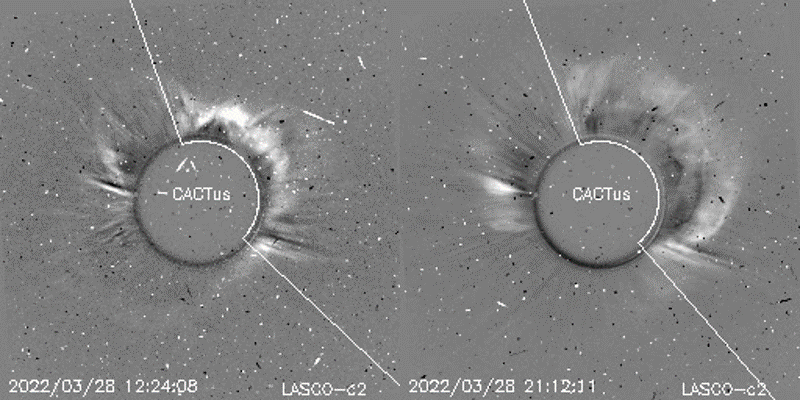Space Weather Alert - 29th March 2022
What Has Happened?
A full-halo Coronal mass ejection (CME) left the Sun at approximately 11:30UT on 28th March. It was associated with an M4-class flare originating from the Earth-facing active region AR12975. The same active region then caused a second M1-class flare, producing another Earth-directed CME shortly after, around 19:20UT on 28th March. This CME will combine with the previous and they are likely to arrive early on the 31st March. These CMEs are expected to cause significant disturbances to the geomagnetic field, making periods of STORM G3 likely.
Assuming clear, dark skies, there is a greater chance of seeing the aurora on the 31st March and 1st April. Those in Scotland, northern England and Northern Ireland have a better chance, if the weather is favourable overnight on 31st March.
Sign-up to receive Geomagnetic Disturbance Alert emails.
Follow us on Twitter:
Follow @BGSauroraAlert for more occasional aurora alerts.
Follow @BGSspaceWeather for daily space weather forecasts.
Glossary
- BGS
- The British Geological Survey is one of the Natural Environment Research Council's Research Centres.
- CME or Coronal Mass Ejection
- The eruption of a portion of the outer atmosphere of the Sun into space, caused by rapid changes in its magnetic field. Often occurs along with a solar flare.
- Solar Flare
- Energy released by the explosive reorganisation of magnetic fields within the Sun's atmosphere.
- Solar Wind
- The ever-present expansion of the Sun’s hot outer atmosphere into the solar system, which carries space weather within it.
- Sunspot/Active Region
- A region of intense magnetic field in the Sun's visible outer atmosphere often associated with flares and CMEs.



